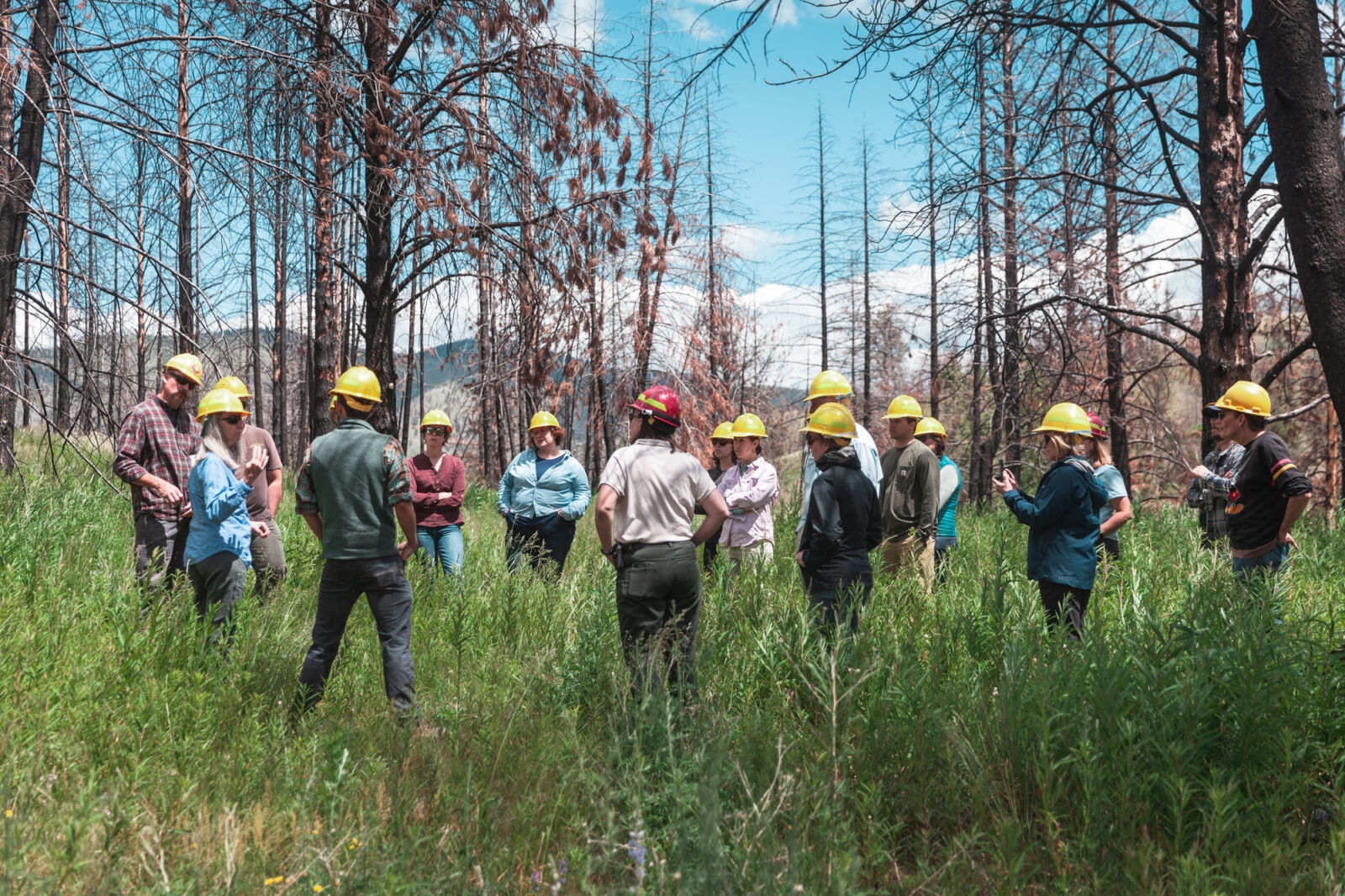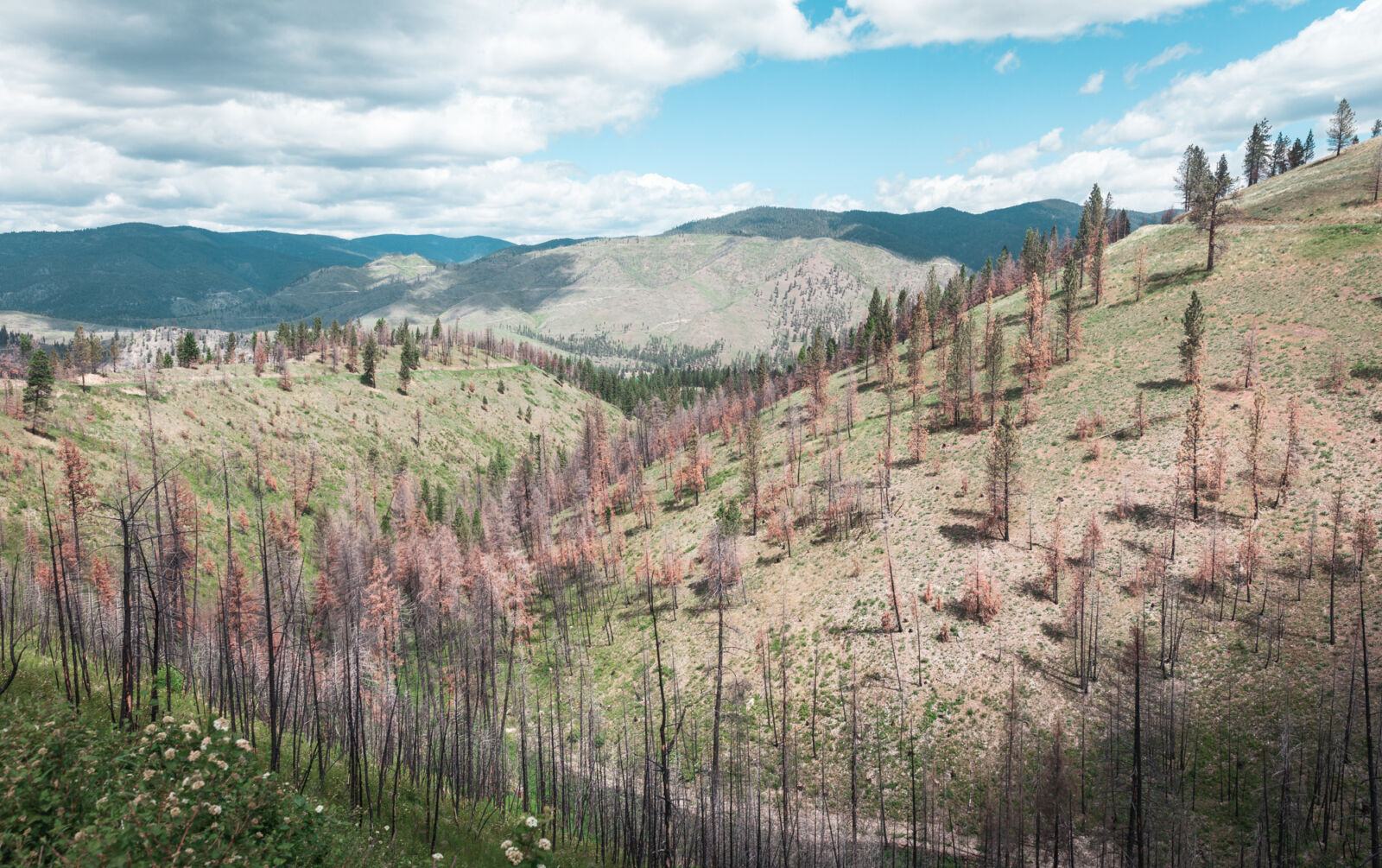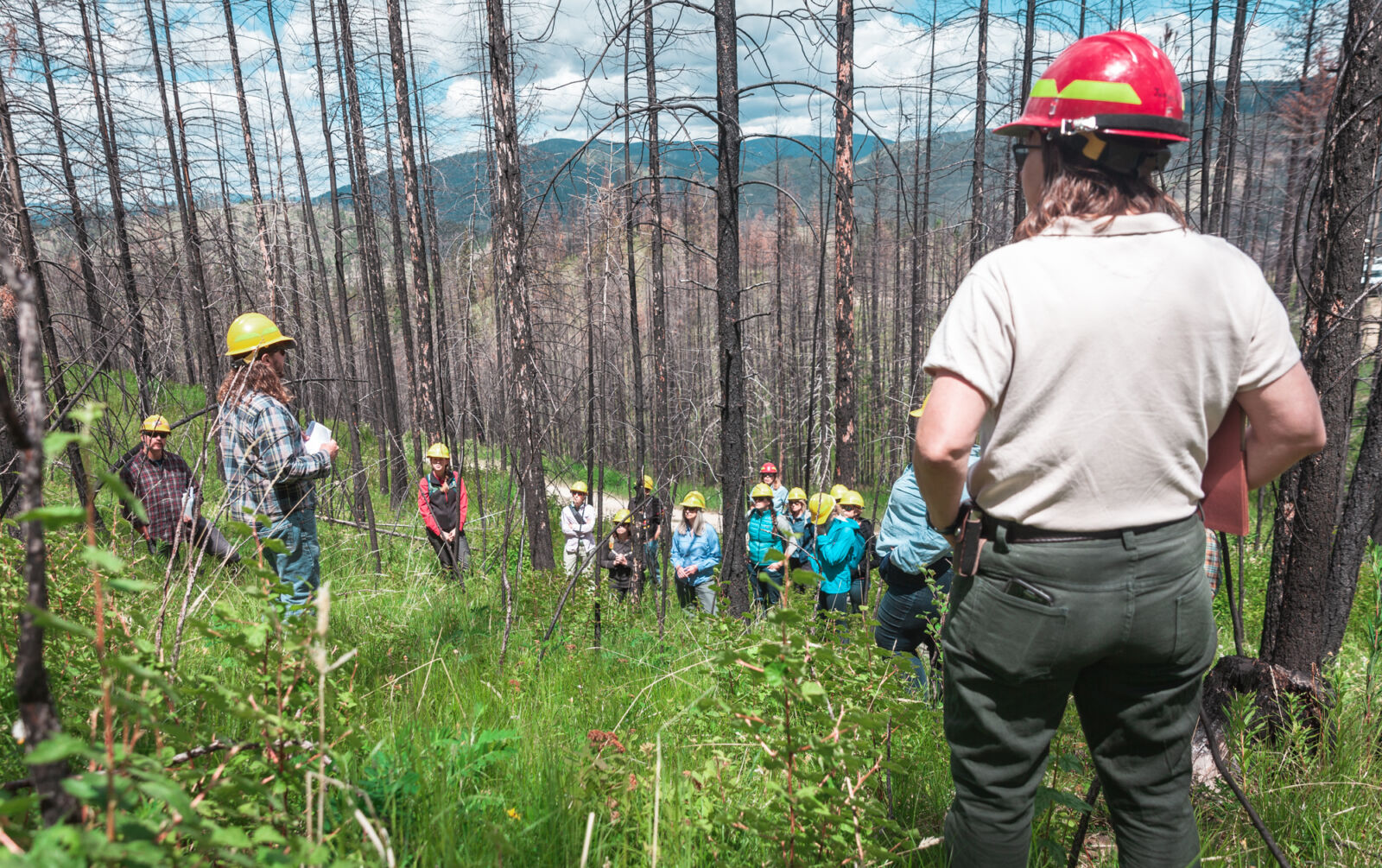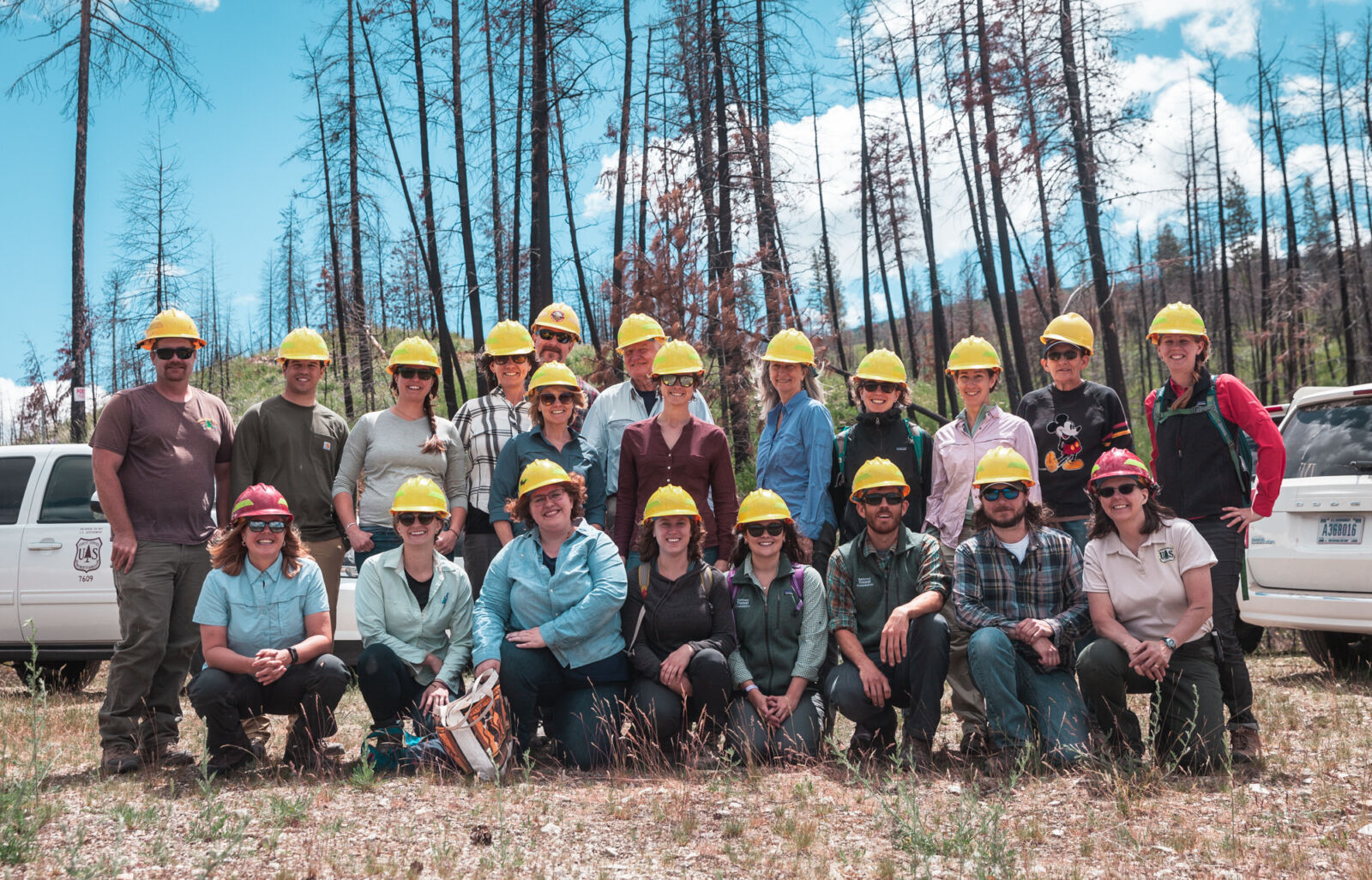Recently, the NFF staff had the opportunity to visit a local reforestation site on the Lolo National Forest. In 2017, the Lolo Peak Fire burned nearly 54,000 acres and resulted in resident evacuations throughout the Bitterroot and Missoula Valley communities. Now two years after the wildfire tore through the Lolo National Forest in Montana, the NFF and the US Forest Service have begun restoring areas affected by the fire. Made possible through small business, corporate, and individual tree planting donations, Lolo Peak is being reforested with native species.
During our visit to the Lolo Peak reforestation site, our staff learned about the reforestation process and the importance of tree planting after forest disturbances. In our own words, here are some of the things we learned and experienced:

Dave Gardner
Share one thing that you learned during the site visit.
This field trip was a good exercise for me as a new staff member to be able to get a sense of the relationship between the NFF and the Forest Service, and specifically the scope of a tree planting project. I am impressed by the effort put into species selection and placement, with consideration toward the long-term viability of the planting and appropriate diversity within any stand. [Darla Cotton, Administrative Assistant]
I knew that forest ecology included wildfires, but I didn’t know that different kinds of forests had adapted differently to wildfire. It was interesting to learn how some forests are better able to withstand more severe fires, while others have historically less severe fires and have not evolved with the same level of resiliency. [Britt Holewinski, Tree Planting Associate]
One thing I learned about reforestation is that climate change has affected our planting window [the time we can plant the trees each year] drastically and it is only getting smaller. [Hunter Maggs, Accountant]
I learned that the Forest Service collects seeds locally, meaning that the trees they plant are genetically local. For some reason I’d never thought about where the seedlings actually come from, so it was really cool to find out that usually the answer is the same forest or region where they’ll be planted! [Katie Neher, Database Associate]

Dave Gardner
After visiting the Lolo Peak reforestation site, why do you believe tree planting is important?
Tree planting is important because specifically with severe wildfires, burn scars can be so large that seed sources become too far away for natural reforestation to occur. Tree planting helps bridge that gap and helps keep our forests healthy. [Britt Holewinski, Tree Planting Associate]
Due to years of fire suppression, changing climate, and other factors, fires burn hotter, larger, and longer than they used to. Even fire-adapted trees can’t necessarily survive modern wildfires, so without tree planting programs these burn areas might never regenerate. If we want these forests to be available to future generations we have to replant them ourselves—it’s that simple. [Katie Neher, Development Database Associate]
While the time frame from the event [wildfires, natural disasters, disease outbreak, etc.] to planting seems long from an elementary view, it’s quite logical when you know the process from fundraising to seed harvesting and cultivation, to planting. [Darla Cotton, Administrative Assistant]
Tree-planting is important because I want my children and future generations to enjoy these forests just as I have before the fire. [Hannah Ettema, Communications Manager]

Dave Gardner
Is there anything that surprised you about the reforestation process?
That it only takes a tree planter about 15 seconds to plant a tree! [Maisie Powell, Conservation Connect Fellow]
It surprised me how difficult it is to plan for future planting projects due to the rapidly changing environmental factors such as precipitation, temperature, soil moisture and and weather patterns. [Britt Holewinski, Tree Planting Associate]
There is a tremendous amount of planning, science and care put into which trees are planted where. The Forest Service does their best to ensure each tree has a chance at success. [Hannah Ettema, Communications Manager]

Dave Gardner
Is there anything else you’d like to share about the visit or our tree planting program?
It was a great opportunity to get out into the field to see firsthand how NFF, our donors, and partners are contributing the health of our forests. [Maisie Powell, Conservation Connect Fellow]
So many tree-planting projects wouldn’t happen on our National Forests without the support of the NFF and our donors. [Hannah Ettema, Communications Manager]

